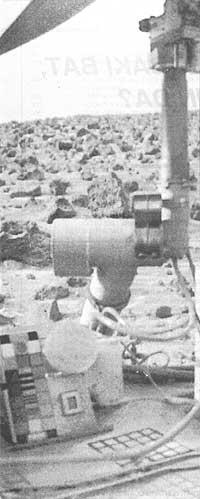New Martitz target

Of course, astronomy has never been between areas that have been interesting because of their practicality. In addition, the US Earth space analysis program has also been disrupted following the Challenger accident. Four months ago this negative vision became somewhat clear, although it was only due to a rebound.
As is known, at the summit last spring of Gorbatxov and Reagan there had been no progress in reducing nuclear weapons or disrupting the program of galaxy warfare, but an agreement has been signed on the study of outer space and its use for peaceful purposes for the benefit of astronomy.
The agreement aims to transfer the collaboration of both powers to five areas:
- Analysis of the Solar System Astrophysics Earth Sciences Analysis of Sun and Earth Interactions
- Biology and space medicine
Sixteen lines of projects have been carried out around these five areas, four of them related to Martitz. In general, the intention of the latter is the collaboration on the missions to be sent to Mars, the interaction of the data obtained and the search for the most appropriate place to land a spatial emergency on the red planet. The ultimate goal of all these works would also be to bring man to Mars in the medium term.
As expressed in the title, this is not the first session that is directed towards the red planet. Both Soviets and Americans have launched several space lines to orbit around the planet and take pictures of their only satellites, Phobos and Deimos, to land on it. Soviet missions were unsuccessful with respect to the final goal, as although Mars 3 stood on Mars, contact was lost before the second minute. The Americans, for their part, managed to land and analyze samples through the two space lines of the Viking mission launched in 1975. Since then such projects have been completely excluded for a decade, until their recovery by the Soviets.

The first two spacecraft of this new generation start last July with a few days of difference. These two probes are part of the Phobos mission, as in addition to Martitz, their main objective is this satellite.
This is not the only mission to be undertaken to study Martitz. The USA are preparing the Mars Observer program for release in 1992 (initially planned for shipment in 1990). Mars Observer will take a very close orbit and conduct a very deep study along the surface of all Mars. In addition to exploring its composition and mineralogy, it will analyze the circulation of the martyr atmosphere and its most important components and dust throughout all seasons of the year.
After the completion of all these projects, Soviets and Americans will prepare a new joint mission to bring samples of the red planet after being collected by a rover that will move on the surface of Mars. After all this, we could start thinking about an equipped trip, but we will talk about it next time.
Finally, we will say that the Soviets are carrying out a mission of the same name to study the asteroid Vesta for 1992 with the help of the Americans. As is known, Vesta is one of the bodies on the list of asteroids between Martitz and Jupiter.





